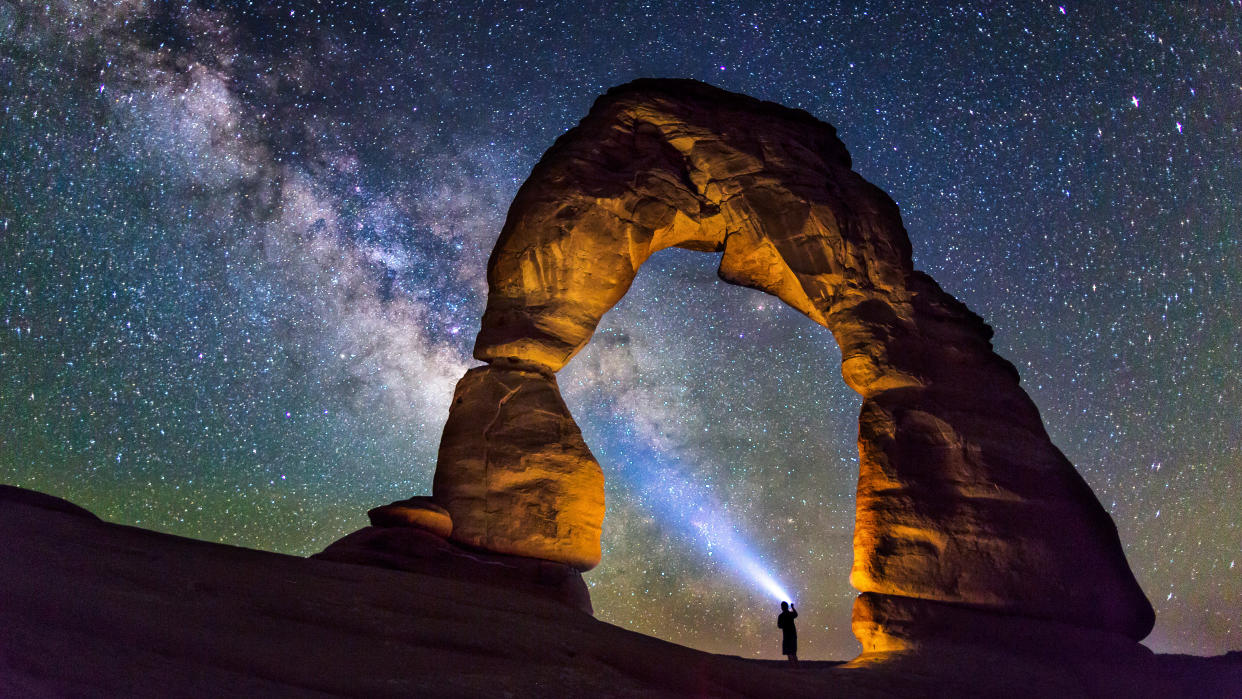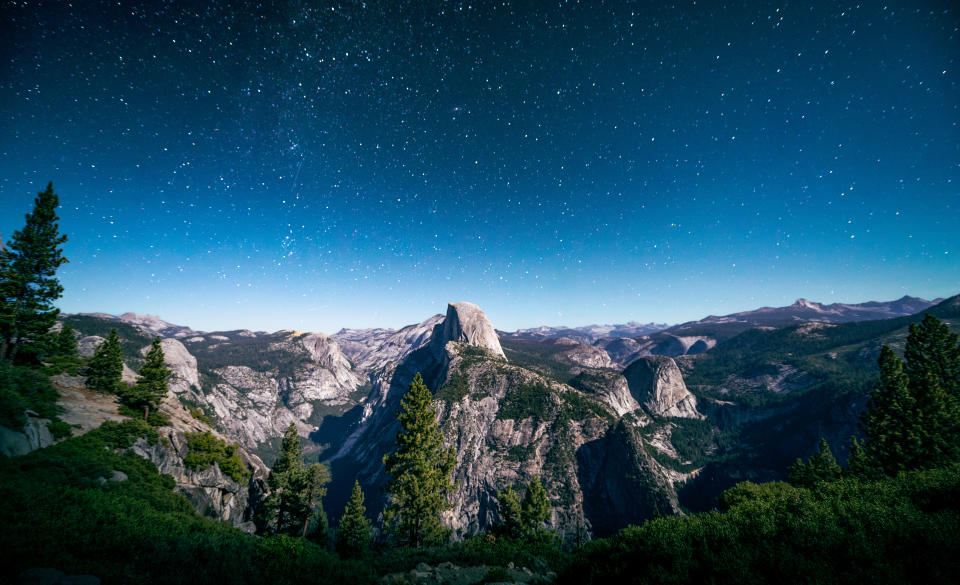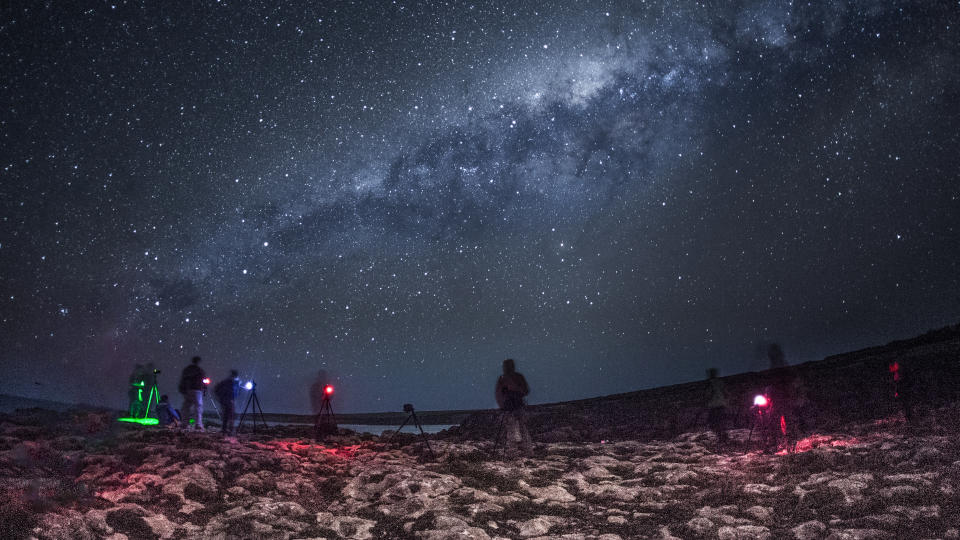Why you should stop painting with light when photographing at night

You wouldn’t kick another astrophotographer’s tripod, so why is switching on a light at night socially acceptable? It’s not – it never was, but using any kind of artificial light at night is increasingly being banned by national parks.
It’s part of the wider fight against worsening light pollution, according to a recent international study, but it’s astrophotographers themselves that are now being asked to take special care when shooting in International Dark Sky Parks.
After all, what’s the point of showcasing a location’s dark skies if actually you’re busy polluting them with light between exposures?
Where light painting is banned
A superintendent's compendium banning light painting now applies to some locations beloved by astrophotographers, including Arches National Park, Canyonlands National Park, Hovenweep National Park, Natural Bridges National Monument in southeast Utah, as well as Yosemite National Park in California and Grand Tetons National Park in Wyoming.
The superintendent's compendium reads: “Light painting activities of any kind are not authorized … the use of artificial light sources for purposes other than personal route-finding or minimum-impact camping—that is, to light up landscapes, rock formations, or other park features—is prohibited.”
If you’ve ever stood taking images of the Milky Way and been interrupted by other astrophotographers illuminating foregrounds with LED lights and light boxes – instantly ruining your own long exposures – you’ll know how frustrating it can be, but this is about more than just good manners.
• Astrophotography in June 2023 - what to photograph this month
Video (above: Light painting in Arches National Park disrupts the nighttime environment.
Why light painting is banned
“The excess light produced through light painting can impact nocturnal wildlife in the park and disturb natural processes of the nighttime environment,” says Rhodes Smartt, an Interpretive Park Ranger and Night Sky Ranger at the Island in the Sky District of Canyonlands National Park in Utah. “We have light painting as a prohibited activity not to constrain the recreation of visitors but to enhance the experience of everyone who is visiting the park after dark and protect to the habitat of those that live here.”
Canyonlands—a vast desert area in Utah—is home to nocturnal animals including kangaroo rats, woodrats skunks, ringtails, foxes, bobcats, mountain lions, bats and owls.
Even if you’re not in a place where light painting is officially banned, who still need to think very carefully about light painting. “It’s really important to think about the other animals or people in the area where you are before you start light painting,” says Bettymaya Foott, an accomplished astrophotographer and Director of Engagement at Dark-Sky International, who points out that even very small amounts of light can be detrimental to wildlife. “Some people have traveled thousands of miles to experience a dark sky for the first time and being bombarded by bright lights shining on rocks or arches really takes away from the nighttime experience of an area,” she adds.

Using ‘blue hour’ and moonlight
A useful natural source of light is during the blue hour – before sunrise and just after sunset – a period of soft natural light and cool color temperatures. “Blue hour happens when the sun is 4 to 6 degrees below the horizon,” says Foott. “You can capture faint objects like the Milky Way, but there is enough ambient light for your camera to capture details in the foreground in a single exposure.”
There are also many photographers who shoot their foreground shots during sunset, and then merge that foreground with a night sky shot taken during true darkness.
One way of getting around the ban on light painting is to use moonlight, though you have to be careful it doesn’t wash out the stars. “Avoid a bright, high moon – the most extreme would be a full moon close to the December solstice – which can wash out a foreground, and instead choose a night when the moon is small and low on the horizon,” says Foot. The moon is lowest close to the June solstice.
A good way to see both the phase of the moon and its exact position in the night sky is to use the paid-for PhotoPills app. Look for periods when a crescent moon is in the sky. “Waxing crescents will illuminate your foreground as soon as it gets dark, and set after an hour or so depending on how illuminated it is,” says Foott, who adds that a thin crescent gives a hint of light on a foreground without washing out too much of the sky. “Waning gibbous moons are super fun to shoot because you can get an hour or so of darkness before the moon rises and illuminates your foreground,” says Foott. "This makes for great 'foreground reveals' in time-lapses.”

Working with light-polluters
Despite the bans and the ethics of using light in dark places, many ignorant or careless astrophotographers will continue regardless. “You have photographers out there that still light-paint anyway,” says Ryan Andreasen, a Utah-based astrophotographer and dark sky activist at NightSkyScience.com, who was recently at Mesa Arch in Canyonlands National Parks – a rock arch that can be photographed with the Milky Way arching across it in spring – when exactly that happened. “At about 3 a.m. people started showing up to shoot the sunrise, but they came in with their lights,” says Andreasen. “It’s amazing just how much one headlamp can wipe out a time-lapse video.”
With lights blazing around the site, Andreasen had no choice. “I finally just told them that none of us are ever going to get a good photo until we work together and time this correctly,” he said. After all, who hasn’t had another photographer switch on a headlamp, or even a smartphone, just at the wrong moment while they search for a dropped SD card or fresh battery?
“You shoot then you have a ceasefire—just like at a shooting range,” says Andreasen. “Agree to wait for everyone to set up and then have a countdown to a period of no lights whatsoever.” Of course, that could be 30 seconds or it could be a few minutes for foreground exposures.
Respect others
“When you light paint at an area with a lot of other astrophotographers, you are asserting your wants before anyone else's and taking over the nighttime experience for others,” says Foott, who thinks that even in areas where light painting is allowed it’s best to discuss with other astrophotographers so everyone gets what they want.
“It comes down to respect,” she says. Although it may not come naturally, making the effort to work with other astrophotographers is a great way to meet new like-minded people and share settings and advice—and it doesn’t even have to apply only to light painting.

